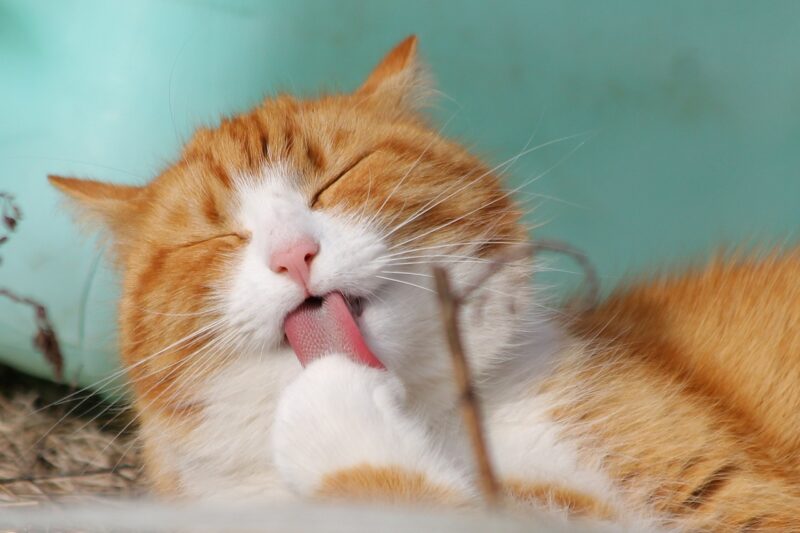Understanding Cat Behavior: Why Cats Do the Things They Do
November 10, 2024

Cats are fascinating creatures with behaviors that often puzzle their human companions. From bizarre antics to simple rituals, understanding your feline friend can enrich your relationship with them and improve their well-being. In this article, we will explore various aspects of cat behavior, highlighting the reasons behind common actions and offering insights into the mysterious world of our four-legged friends.
1. The Nature of Cats: A Brief Background
Cats (Felis catus) have been human companions for thousands of years. Originally domesticated for their hunting skills to control rodent populations, they have evolved alongside humanity. Understanding their behavior requires knowledge of their wild ancestors, as many instincts remain intact.
Cats are solitary hunters by nature, which influences their behavior. Unlike dogs, which are pack animals, cats tend to be more independent, relying on their instincts for survival. This independence often translates into behaviors that might appear aloof or quirky to humans but are natural to felines.
2. Common Cat Behaviors and Their Meanings
To grasp the uniqueness of each cat, it’s important to look at some common behaviors and what they actually signify:
a. Purring
Purring is one of the most recognizable sounds cats make. While it often indicates a content cat, purring can also occur when a cat is frightened, in pain, or feeling unwell. Understanding the context is key. When your cat purrs while being petted, it is likely seeking comfort or showing happiness. However, if you notice your cat purring but exhibiting other signs of distress, consulting a vet might be necessary.
b. Kneading
Kneading, often referred to as “making biscuits,” occurs when a cat pushes its paws alternately against a soft surface. This instinctual behavior traces back to kittenhood when nursing. The act helps stimulate the mother’s milk flow, and when adult cats knead, it reflects comfort and contentment. If your cat kneads you or a soft blanket, they are expressing a strong bond with you.
c. Scratching
Scratching is a fundamental behavior for cats, serving multiple purposes. It helps them shed old claw sheaths, stretch their muscles, and mark territory via scent glands in their paws. Providing appropriate scratching posts can minimize destruction in your home while satisfying their natural instinct to scratch.
d. Head-Butting and Marking
When a cat rubs its head against you or objects, it is marking its territory. Cats have scent glands on their heads, and this behavior signifies affection and the desire to mark you as part of their family. Embrace this moment as a positive interaction that builds trust between you and your feline friend.
e. Chasing and Pouncing
Cats have a strong predatory instinct. Indoor cats often express this behavior through play. When they chase their toys, they are simulating hunting. Providing plenty of interactive toys encourages their natural instincts and prevents boredom.
f. The Cat Loaf: A Sign of Comfort
When a cat sits with its paws tucked under its body, resembling a loaf of bread, it typically signifies that the cat feels safe and relaxed. This position indicates that your kitty is comfortable in their environment, making it an expression of contentment.
3. Understanding Cat Communication
Cats communicate not only through vocalizations but also through body language. Here are some expressions to be aware of:
a. Tail Position
The position of a cat’s tail is a significant communicator of emotions. A tails upright usually indicates happiness or curiosity, while a low or puffed-up tail suggests fear or aggression. When a cat wraps its tail around you, it is displaying affection and a sense of security.
b. Ear Movements
Cats’ ears are remarkably expressive. Ears pointed forward indicate curiosity and interest, while ears turned sideways or back signal irritation or aggression. Monitoring your cat’s ear position can enhance your understanding of their feelings in various situations.
c. Eye Contact
In the feline world, prolonged eye contact can be considered a threat. If your cat gazes at you while slowly closing its eyes, it’s a sign of trust and affection. Responding with a slow blink will strengthen the bond between you and your kitty.
4. Social Behaviors in Cats
Understanding the social dynamics of cats can shed light on their often misunderstood behaviors:
a. The Importance of Territory
Cats are territorial animals. They establish territories through scent marking and may feel stress when their environment changes. Providing a stable and secure environment is vital for their well-being. If you have multiple cats, establishing clear boundaries is important to avoid conflicts.
b. Socializing with Other Cats
While cats are known for their independence, many enjoy the company of other cats. Their response to other felines can be influenced by their early experiences with socialization. Gradually introducing new cats to owned ones can foster healthy relationships.
5. Addressing Behavioral Problems
Sometimes, cats display behaviors that can be problematic for owners. These include:
a. Litter Box Issues
If your cat refuses to use their litter box, it could indicate a medical issue or stress. Ensuring the litter box is clean and placed in a quiet area can help. Consult a vet if the behavior persists.
b. Excessive Meowing
Cats may meow excessively due to a variety of reasons. It could be a sign of hunger, attention-seeking, or even illness. Paying attention to the context of meowing can help identify the root cause.
c. Aggression
Cat aggression can stem from fear, frustration, or territorial disputes. Understanding the triggers and taking proactive steps to defer confrontations can make a positive impact. If necessary, seeking help from a professional animal behaviorist can provide insights into correcting aggressive behaviors.
6. Tips for a Happy and Healthy Cat
To ensure your cat leads a happy and fulfilling life, consider the following tips:
- Provide Interactive Playtime: Spend time engaging your cat with toys that encourage hunting and chasing behaviors to provide mental and physical stimulation.
- Create a Safe Space: Ensure your cat has areas where they can retreat and feel secure. Cat trees and cozy hideaways can provide comfort.
- Regular Veterinary Care: Schedule routine vet check-ups to keep your feline friend healthy and to monitor for any underlying health issues.
- Grooming: Regular grooming helps reduce shedding and mats while also providing bonding time for you and your cat.
Conclusion
Cats are intricate beings filled with a wide array of behaviors that stem from their evolutionary instincts. By taking the time to understand these behaviors, you can enhance your bond with your feline friend and provide them with the best care possible. Remember, a happy cat is a healthy cat!
Engaging proactively in your cat’s life and understanding their unique personality will ensure a companionship that continues to flourish.







